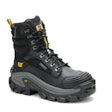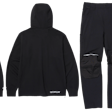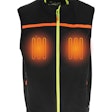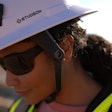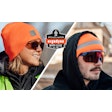
According to the National Institute for Occupational Safety & Health (NIOSH), wearing certain Personal Protective Equipment (PPE) can increase the risk for heat-related illnesses.
In ‘Criteria for a Recommended Standard Occupational Exposure to Heat and Hot Environments,’ the Department of Health and Human Services, Centers for Disease Control and Prevention and NIOSH evaluated scientific data on occupational heat stress and hot environments and resulting injuries, disease, reduced productivity and death. Heat also can increase workers’ risk of injuries, as it may result in sweaty palms, fogged-up safety glasses, dizziness, or reduced brain functioning.
The study notes heat stress is an increasing problem for many workers, particularly those located in densely populated areas closer to the equator where temperatures are expected to rise in relation to climate variations.
Personal health factors can amplify the risk of heat-related illness, such as the use of drugs, alcohol, obesity and insufficient hydration. While PPE is often required to reduce or eliminate exposure to external hazards, it can also reduce the body’s normal way of getting rid of heat by sweating and other means.
PPE Options for Staying Cool
Some PPE can increase the core body temperature quicker than other PPE types in the same environment.
There are, however, types of PPE that can be worn to protect against heat exposures. Auxiliary cooling systems or personal cooling systems include water-cooled garments, air-cooled garments, cooling vests and wetted overgarments. In situations where heat stress levels exceed the NIOSH recommended occupational exposure limit, some form of heat-protective clothing or equipment should be provided.
Wearable personal cooling systems also can be used during a rest period where the worker is not actively engaged in work. Using wearable personal cooling systems could reduce the time required to lower core body temperature.
One study in the February 1998 Ergonomics journal examined the efficacy of a water-cooled jacket for auxiliary body cooling. Four subjects wearing a garment comprised of a water re-circulating three-layered vest of cotton fabric lined with 2 mm diameter latex tubing and inter-spaced coating of rubberized solution were tested in a simulated hot environment. The water-cooled jacket provided auxiliary cooling to maintain comfortable microclimate, skin and body core temperatures, enabling subjects to sustain comfortable heat balance over two hours of heat exposure without any noticeable heat strain.
Cooling Vests
Cooling jackets or work vests may feature such technologies as evaporative cooling found in apparel with built-in reservoirs or pockets for water-absorbing materials. When the product is saturated in water, it releases water slowly and uses evaporative cooling to lower the body temperature.
Dry evaporative technology enables the wearer to stay dry 100 percent of the time for longer time periods after activating the vest with water. Phase Change Material cooling is achieved through jackets manufactured with special materials absorbing and releasing heat at a specified temperature range. Phase Change packs are activated by soaking them in a bucket of ice water, placing them in a refrigerator or cooler for up to 15 minutes and then wearing them under PPE to stay cool for up to four hours.
Some jackets or vests are designed with ventilation panels or zippers. Some cooling jackets feature small battery-powered fans circulating air within the jacket. Gel packs are another option for cooling vests. They are frozen and inserted into outer pockets and can be removed to recharge as needed without having to remove the vest.
Cooling hard hat pads are manufactured with a lightweight and breathable mesh material designed to fit around a hard hat and provide ventilation and cooling.
Limitations of Personal Cooling Systems
NIOSH cautions that personal cooling systems can have limitations. The temperature of ice vests cannot be controlled and often do not stay cool long enough to be practical. A cooling system that is too cold results in reduced heat transfer from the body to the hot environment. Water-cooled garments require the worker be tethered to a system that circulates the cool water, limiting the person’s range of operation. Many wearable personal cooling systems can be too heavy or too cumbersome to be practical in a work environment.




